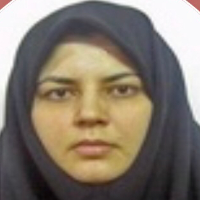A Comparative Study of Stream of Consciousness Between Qassan Kanfani’s Novel "Ma Tabaqqa Lakum?" and Hooshang Golshiri’s Novel "Shazdeh Ehtejab"
The symbols linked to the world of dreams and consciousness are considered the psychological issues which are functioned in the plot of modern novel. Then, modern novel is a kind of interior monologue by the characters who are expressing non coherent ideas from their past and present which is called stream of consciousness. This is a narrative device that attempts to give the written equivalent of the character's thought processes, either in a loose interior monologue or in connection to his or her actions. This writing is usually regarded as a special form of interior monologue and is characterized by associative leaps in thought and lack of some or all punctuation. The stream of consciousness and interior monologue are distinguished from dramatic monologue and soliloquy, where the speaker is addressing an audience or a third person, which are chiefly used in novel. in stream of consciousness, also known as interior monologue; which is a narrative mode or device that depicts the multitudinous thoughts and feelings which pass through the mind. the novel “Mᾱ tabaqqᾱ lakum” (what is remained for you) by Qassᾱn Kanfᾱni and “Shᾱzdeh Ehtejᾱb” (Prince Ehtejᾱb) by Hooshang Golshiri are narrated by of stream of consciousness and this technic is seen in the prementioned novels in the influencing of concerns and activeness of tension in the dreams and the psychological damaged in the characters of story. Qnfani in this novel deals with the issue of occupation of Palestine while Golshiri presents a person (Shazdeh Ehtejab) who is at the verge of dying. The two novels had the common points in plot, so the characters in both, are concerned to their own interior world to such an extent that the dispersed ideas of the character are dominat on the narration. This research at first, aimes to put light on the style of stream of consciousness in the two novels and clarify how the authors could make themselves free from the criterias of the common plot. The second aim of research is comparing the contents and mental actions of narration. The result indicates that the function of stream of consciousness in the both novel is same in general. But in details there are some differences like the time of the novel Shazde Ehtejab is during one night and the addressed ones, during the novel, become aware of the past of the main character by following the dispersed narration presented. and the content time is intertwined with the mental time. Bothe novelist doesn't present themselves directly in the novel and characterization but take a neutral positon in actions of story, so the characters have the main role in narrating of story and the main narrator is free in telling the actions of novel without accepting any intervention from outside of novel.
-
Transtextuality in the Aina-ye-Eskandari by Amir Khosrow Dehlavi
Hosnieh Nomosalman, *, Mohammad Mir
Journal of Subcontinent Researches, -
Examining the violation of prisoner's rights in the novel "Sharq al-Mutawassit" based on the rules of the minimum standard of treatment of prisoners
Aliasghar Habibi *, Abdolbaset Arab Yosefabadi, Davood Seifi Ghara Yatagh
Journal of The Journal of New Critical Arabic Literature, -
A Study of Conceptual Metaphors in the Language of Writings on Tombstones
Abdulbasit Arab Yousefabadi *
Research in Arabic Language and Literature, -
Manifestation of Resistance in the Book “Sirang” by Moshfegh Kashani
Heidarali Dahmarde *,
The Journal of Resistance Literature,




